Review: west coast & FM synthesis collide in Nozoïd MMO-3, a refreshingly different looking & sounding Synthesizer for sonic experimentations
The Synthesizer world is split into east- and west coast designs. The first follows a classic subtractive synthesis approach where you have multiple oscillators, a filter, envelopes, etc. In contrast, west coast synths designs offer different structures. Often sine based without filters but with waveshapers, wave folders… that give musicians & sound designers a lot of freedom to form new harmonic-rich sounds.
I got the chance (2017) to check out a very unique, experimental hardware synth from France. MMO-3 by Nozoïd is a west coast-inspired synth that generates rich sounds using only sine waves with different shapers and modifiers. This is a revision version of the initial review.
A Very Different Interface
The interface of the MMO-3 is different, refreshing, and challenging at the same time. It’s blue and the board with the knobs is held by a wooden frame. The Nozoïd synth doesn’t look like a mass product off the assembly line but comes with a very own design. No plastic or aluminum case. The board itself serves directly as an interface which is surprising at the beginning.
There are 30 knobs for the individual features and small buttons for two tasks. First to operate the digital connection matrix, second as a 2-octave keyboard. Not for ambitious keyboard players but good for quickly hearing a sound. Besides this, you can find a joystick with a mixing functionality for 4 modulation signals. Each mod source can be assigned to one mod wheel direction (up, down, left, right). So musicians can play sounds more vividly
The operation of the interface is very unique and not comparable to other synths. Although it’s an interesting approach, the implementation is somewhat unfavorable. That’s because the interface doesn’t offer real feedback. No information when a function is on, no screen… you have to rely on your hearing. A small display would definitely help here.
Connectivity
The arrangement of the connections is also different. Instead on the backside, you can find audio and MIDI I/O on the interface. It includes a stereo in & out, 5-pin socket MIDI input (note, velocity, pitch wheel, control change), analog CV in, and Gate in. All parameters of the MMO-3 are also controllable over MIDI CC what is great. A power supply input is on the backside.
Next to the audio output, the synth also hosts an audio input for routing external signals in the engine. Two operation modes are available. Either you connect an envelope follower to the left input that generates gate signals in order to easily sync the synth to other sound machines. Or you use the audio signal as a modulation source for the oscillator or joystick.
Flexible Routing
One of the things that distinguishes the MMO-3 from regular Synthesizers is the wireless modular sound engine. This already starts with the freely assignable shaper functions for each oscillator up to the flexible routing of the ADSR envelope. This routing freedom allows to route one oscillator signal back to the first one. Thus, you can experiment with weird sounds with auto-modulation or a feedback loop.
Although it’s exciting to have a flexible engine, programming is a bit difficult. Since the synth has no display, one has little feedback whether it is activated or not.
Feature-Rich Oscillators
The MMO-3 is a monophonic synth consisting of three sine-wave oscillators. These can then be further processed using various shaper functions: frequency modulation (FM), amplitude modulation (AM), phase modulation (PM), and wave-shaping modulation (WSM). Often you only find 1 or 2 in a synth, here they come all together. These are not located in one place but are freely mappable which makes it very interesting.
Each oscillator has three modulation parameters for this purpose, which you can freely assign with functions. For example, FM only on the first oscillator while PW and AM on the second. You have basically a modular synth without patch cables. Thus, it allows you to craft your own synths such as an FM synth, Buchla-inspired, or a mixture of both. These are certainly wild and experimental.
Anyone who deals with the MMO-3 will quickly notice how deep the oscillators can be bent. A filter, who needs it? The various shaper functions give you sonic results that are not possible with monophonic east coast oriented synths (Minimoog…). The focus is here to add harmonics and less to remove them. It’s really fun to transform those simple sine waves in very harmonic-rich and cold waveshapes/timbres. No bread and butter sounds.
Before we move on, we take a look at the signal path which is very important.
Signal Path
The big heart of the MMO-3 is the digital matrix in which you set the internal connections. It’s your synthesis control center. The first destination of your three sine oscillators is a classic mixer. Next, it travels in a dual VCA that amplifies and enriches the signal. A simple ADSR envelope controls both VCAs, and yes, you can change the routing.
Last but not least, there is a dual distortion unit. Unfortunately, there is no direct access to the distortion effect. Handy, you can put the VCA before (PRE) or after (POST) the distortion. This gives more flexibility.
Complex Modulation
Not only the oscillators are complex, the three LFOs as well. Each LFO is very unique and operates in a unique way. LFO 1 uses a shape morphing function that morphs nicely between triangle, saw, sinus, square, and pulse. With LFO2, the whole modulation party gets more wild. It generates rich shapes by applying amplitude modulation on two sinusoids.
LFO 3 surpasses the functionality of LFO 2 by offering the users five different types. You select them son the bottom of the interface. These types are available: shape morphing (LFO 1 and LFO3), AM (LFO 2 and LFO 3), FM (LFO 3), triangles (LFO 3), and steps (LFO 3). If you want weird and unusual modulations, you’ve come to the right place. Here is an in depth look at this third LFO.
Classic subtractive synths are often limited to classic waveforms (saw, triangle…) in the LFO spectrum. The MMO-3 breaks through this limitation very beautifully and thus allows very distinctive modulations. Small movements up to very rhythmic LFOs are possible here. Since it’s very easy to achieve audio-rate modulations, MMO-3 is a true playground for experimental digital sounds. The LFO 3 is super fun and especially with the step function, you can achieve very creative results like rhythmic step modulations. It’s deep, versatile and it can compensate a bit the missing sequencer inside the synth. Yeah, no sequencer.
Next, it also features a classic ADSR envelope that mainly controls the sound amplitude, but it is also freely assignable to any sound aspect (shaper,…) as a modulation signal. Simple at first glance, deeper at the second. You can use it in different ways (gate or LFO 3 mode) making it more flexible. It’s also relatively fast and allows musicians to quickly build short percussive sounds or even long drones.
How Does It Sound?
The Nozoïd MMO-3 Synthesizer showed clearly in the test phase that it has a very versatile digital sound. Yes, it sounds very digital but with a lot of harmonics and character. However, the synthesis is not comparable with a classic Yamaha DX-7 or Buchla for example. MMO-3 combines FM with west-coast synthesis in a unique way.
The synth is capable to create beautiful percussive FM sounds, fat soundscapes as well as unusual harsh and dirty timbres. MMO-3 fits perfectly into the experimental music worlds. The versatile, almost bizarre modulators make this possible. If you want to produce classic synth sounds, it will definitely not be your first choice as it does everything except simple sounds.
It is not the king of warm sounds but perfect for such digital sounds that you can’t find in analog synths. Cold, glitchy, unpredictable, noisy…, all sounds that trigger experimental musicians, noise artists or sound designers. The more complex the more exciting. I personally enjoy the sound a lot as I’m always looking for new unusual sounds.
Nozoïd MMO-3 Synthesizer Review
Often, the search for a new Synthesizer begins at the big players (Korg, Roland, Moog, Behringer…) The test shows that you should also expand your search beyond the big companies. Here you can find electronic music instruments with unique concepts or designs such as the MMO-3 from Nozoïd. It can score with a very own sound character that is versatile and rich thanks to a distinct shaping feature set. From clear, distorted, up to noisy or glitchy, the synth is capable of a wide range of sonic colors. The MMO-3 is not only a perfect drone Synthesizer but makes also a good figure in combination with notes (arpeggiators, sequences…).
Minus points goes to the interface that could not convince me completely. It’s certainly refreshing to see a different approach to an interface. The idea to have everything under your finger is great but unfortunately, the whole thing was not developed to the end. I miss a small display that gives you feedback about all parameters, particularly the modulations…
If you program complex sounds, you can quickly lose track of what you modulate. So it’s helpful to take notes on a sheet what you did with the interface. Also, the developers could improve the material / quality of the knobs. In my loan device, these ware made of foam which, in my opinion, does not have the perfect grip and feels a bit cheap. The overall processing is positive: very light, and nice wooden sides which are a good contrast to the blue panel.
The MMO-3 is an refreshingly different synth. It’s an instrument for sound designers and sonic explorers. The monophonic engine makes it less interesting for synth players. For a price of 499€, buyers get an utterly unique digital mono Synthesizer that is difficult to compare with another device. If I had to name a device that comes close to the MMO-3, then it’s the Make Noise 0-Coast but just because of the concept.
Pro
- west-coast meets FM synthesis
- harmonic rich timbres (cold, digital, noisy…)
- wireless modular modulation matrix
- versatile in use: drones, percussive, experimental…
- refreshing design
Neutral
- interface (limited visual feedback)
- assignment of the joystick
- direct access to the distortion effect
Negative
- knob quality
- keyboard
Nozoïd MMO-3 is available now for 499€.
More information here: Nozoïd

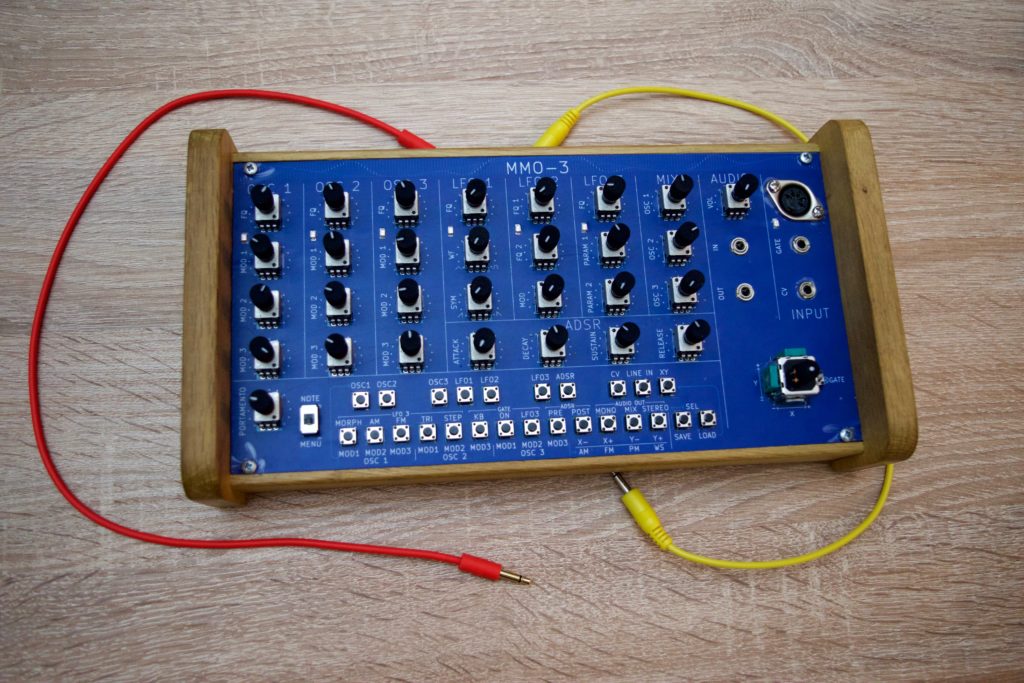

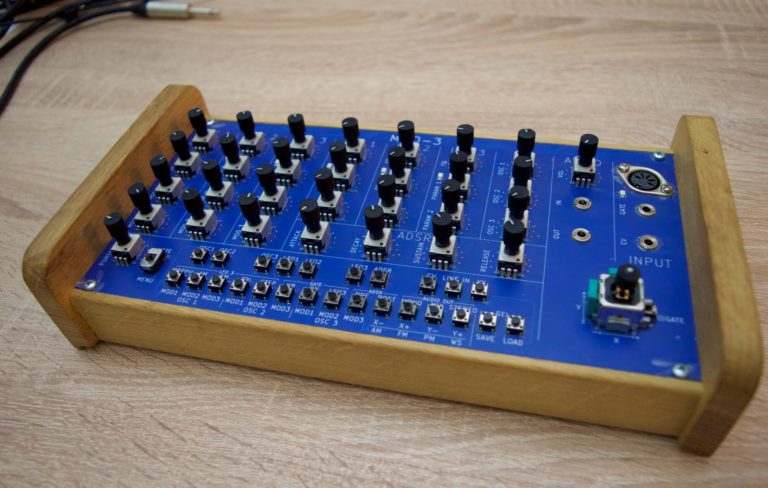

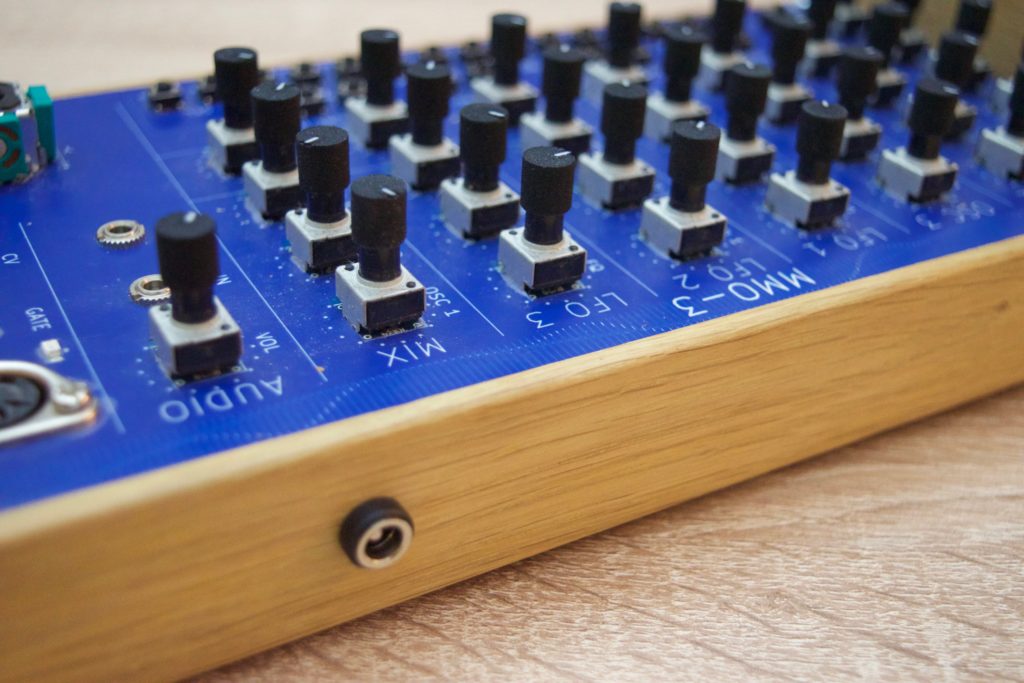
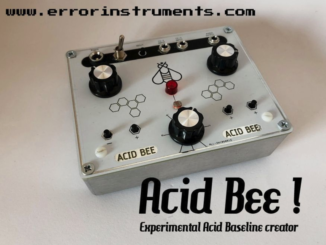
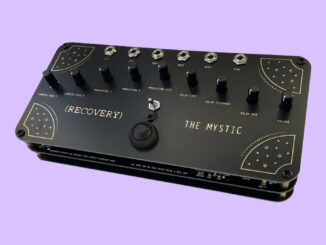
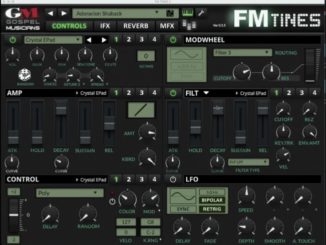
Enjoyed reading as much of this as I was able, but the rampant grammatical errors completely took me out of what I was reading and I kept losing focus on what was being said. Not sure if English is the author’s second language, and if so, it makes it more understandable. Other than that, this looks interesting. I have nearly $10k in Eurorack so not in the market per se, but it’s nice to see devices on the market that are not strictly marketed as semi-modular but still play nice with modular.
sorry that reading is a problem for you. I’m the author and English is my fourth language, so no I’m not a native speaker/writer. Most of those who read the website know this, and it shouldn’t be a big problem, as this is about synthesizers and not a work for the Nobel Prize in Literature 😉 I corrected some more errors after your comment. Cheers